Los Angeles — May 28, 2020
The State of Seafood with Providence’s Michael Cimarusti
In Los Angeles, Chef Michael Cimarusti of Providence describes the struggles and potential solutions facing the seafood industry.
By Andy Wang
Photography by Antonio Diaz
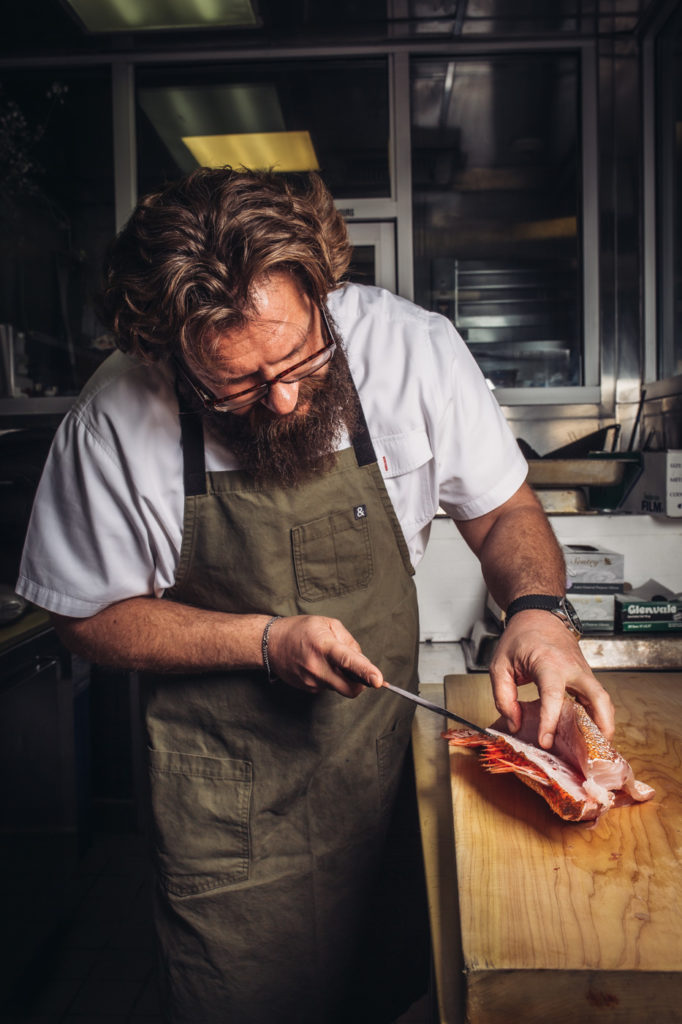
Editor’s Note: This story was originally published in The Extinction Issue of Life & Thyme Post, our quarterly newspaper for Life & Thyme Members.
“There’s a difference between extinction and pushing a fishery to the brink of commercial collapse,” chef Michael Cimarusti of Los Angeles’ Providence says.
We’re at the fine-dining institution sitting at a table overlooking the kitchen because we want Cimarusti to help us understand what fish we should be eating and what fish we should be avoiding. The chef, who focuses on sustainable seafood at Providence, as well as Connie and Ted’s and Eataly L.A.’s Il Pesce Cucina, starts with a surprising bright spot.
“There are lots of examples where we’ve pushed fisheries to the brink of commercial collapse, meaning it no longer makes sense for fishermen to go out and pursue those animals,” he says. “The good news is that with proper regulations and monitoring, it’s been proven time and time again that fisheries can come back.”
Examples include how certain striped bass, swordfish and bluefin tuna in the United States have come back to a point where they can be harvested sustainably. The news about bluefin, a species that has been overharvested and also illegally caught for decades, is especially heartening.
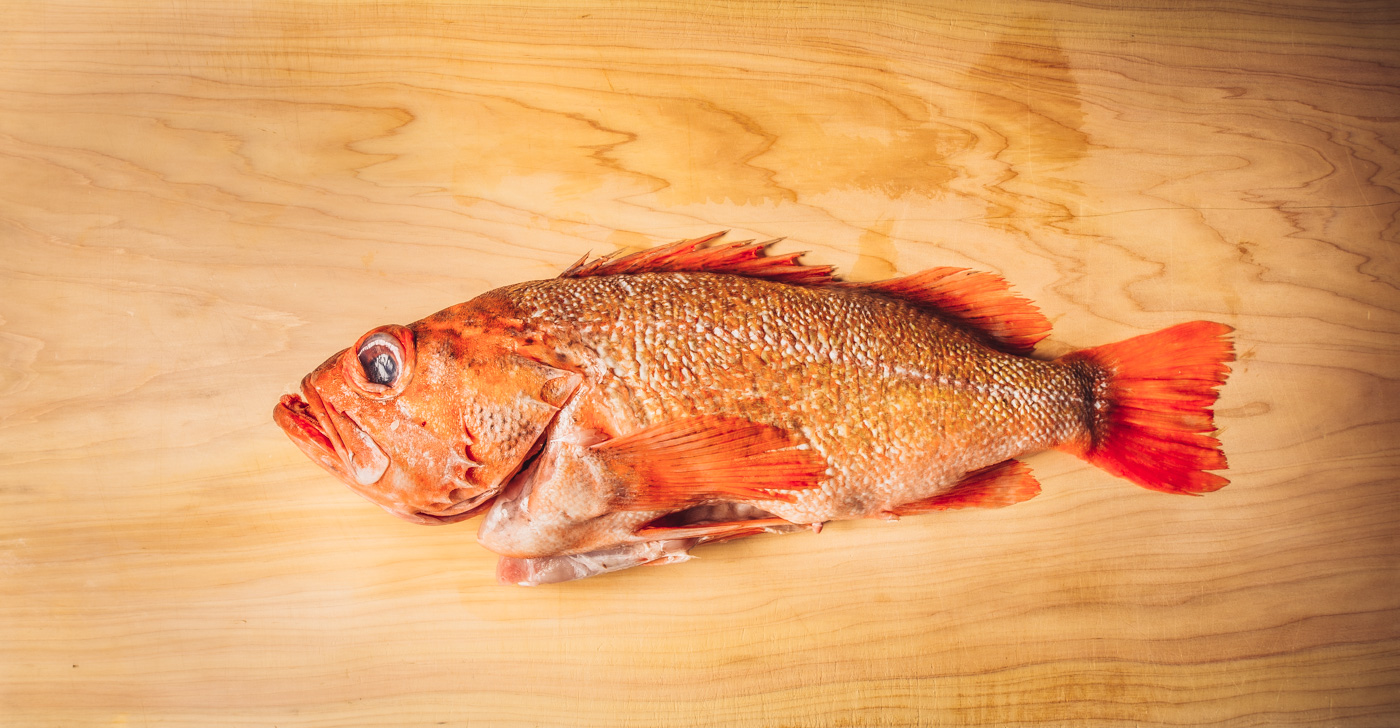
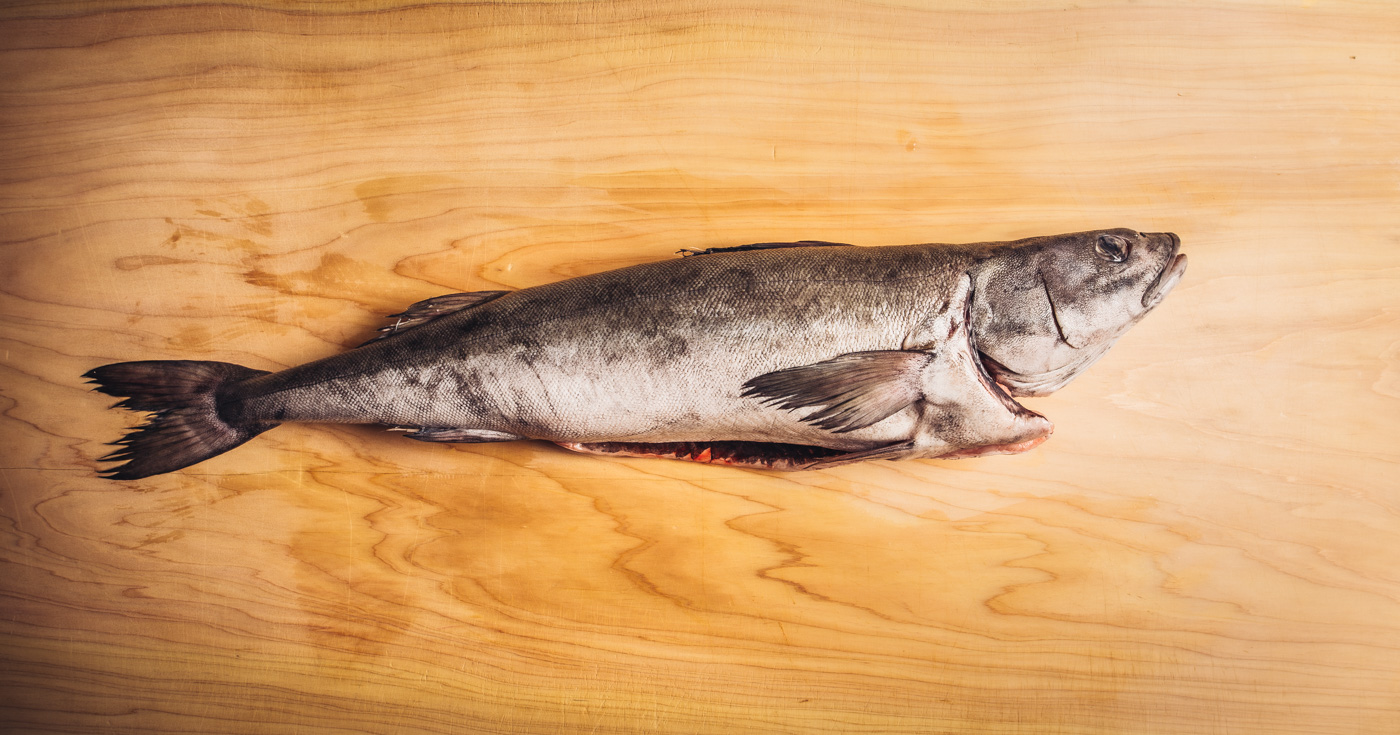
Cimarusti was shocked in January when he learned the Monterey Bay Aquarium Seafood Watch had classified some U.S. bluefin tuna from the Atlantic as a “good alternative.” Since 1999, the Seafood Watch has set standards for fisheries and aquaculture while evaluating how fish are grown and harvested. Factors like habitat, feed, chemicals and disease are considered in the science-based recommendations. The Seafood Watch, which includes information about both domestic and imported fish, gets deep. There is, to offer a quick example, green-listed North Atlantic swordfish, yellow-listed Gulf of Mexico swordfish, and red-listed Southwest Atlantic swordfish. Any fish that’s red-listed is something the Seafood Watch suggests you avoid. The bluefin’s yellow listing is only surpassed by the Seafood Watch’s green listing for “best choice.”
But he probably won’t add bluefin to the Providence menu anytime soon. That’s because Cimarusti, through his involvement with the Dock to Dish wild-seafood program, has become more enamored with local California fish.
“I spent more time in Santa Barbara with fishermen and saw the hard work they did,” Cimarusti says. “Just realizing the quality of the local fish that’s available to us, it seemed silly not to make as much use of it as we possibly could.”
But Providence isn’t a restaurant that wants to preach about sustainability while guests are having dinner. “I don’t think the dining room here or anywhere else for that matter is really the place for making political statements,” Cimarusti says.
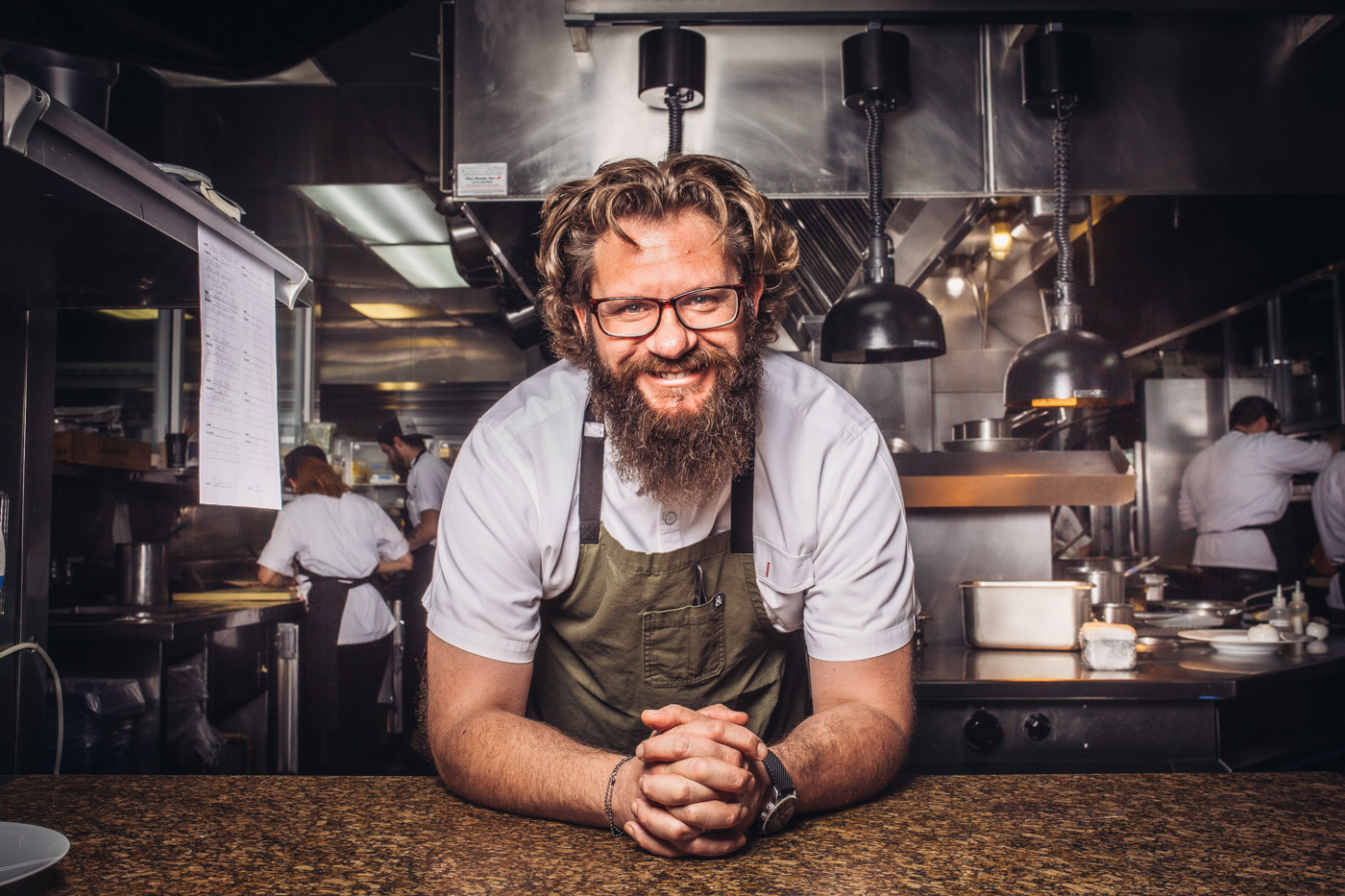
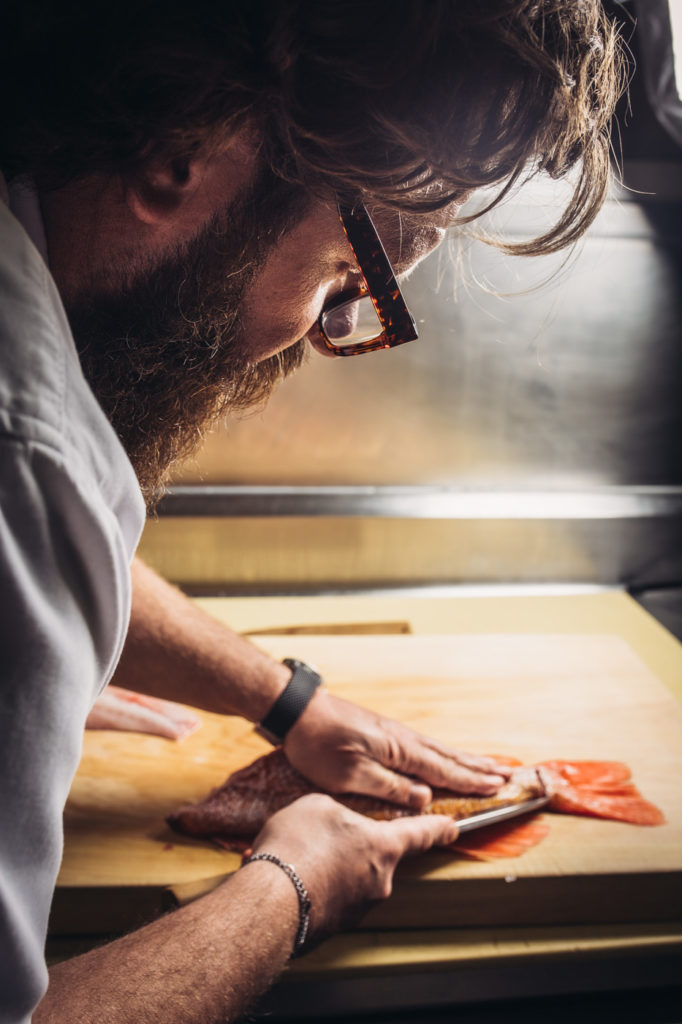
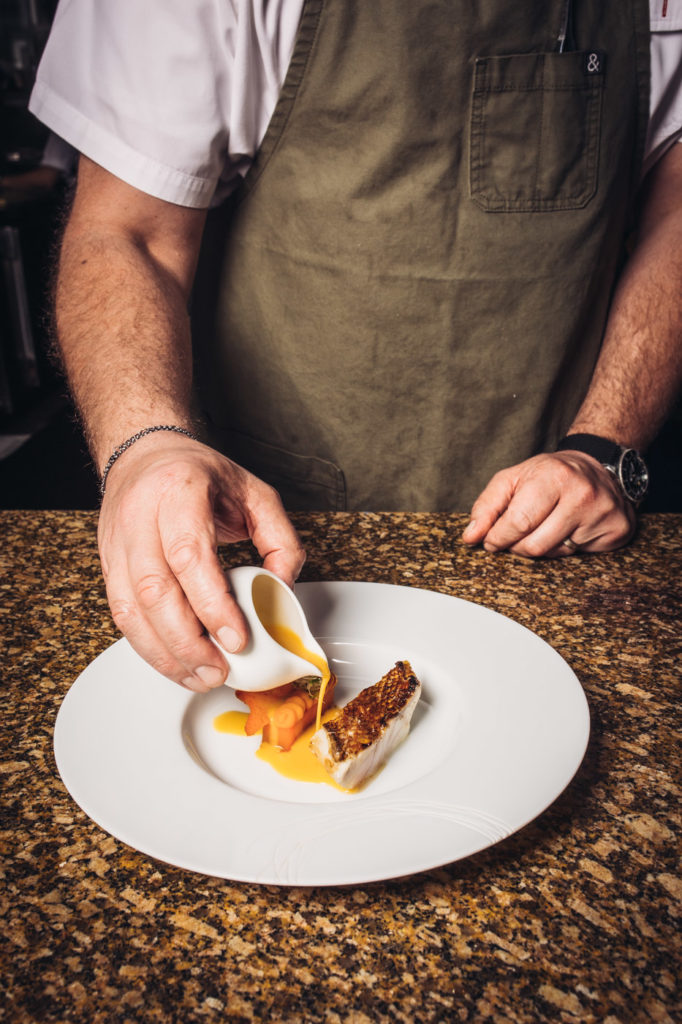
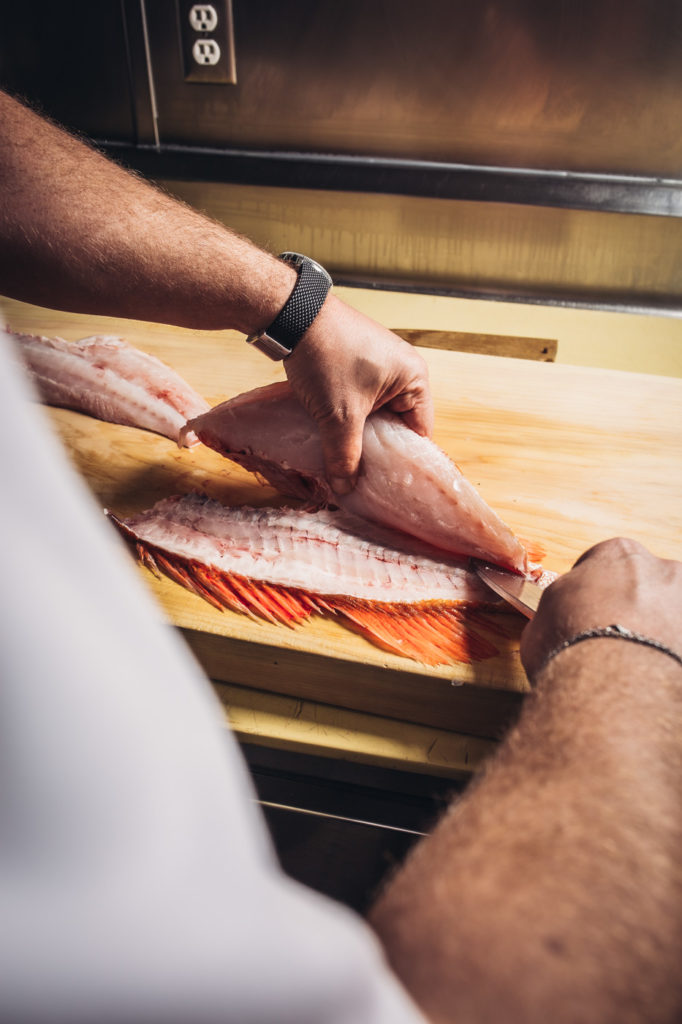

However, Providence does want its customers to understand how local much of its seafood is. “Whether it’s spot prawn or spiny lobster or rockfish or black cod or box crab, we do talk to the guest about who caught it and the name of the boat they caught it on,” Cimarusti says. “That’s always a part of what we do now. And that’s definitely a big change from where we were in the past.”
Cimarusti also has advice about what to look for when you’re buying seafood at a market or ordering fish at a restaurant that isn’t one of his. Unfortunately, it’s not as simple as purchasing one species and avoiding another species. He emphasizes the importance of asking the right questions and knowing your source. “You’ve got to know where it comes from,” Cimarusti says. “You’ve got to know what it is.” He suggests that when you find fishmongers you like, stick with them. Having regular purveyors is something Cimarusti swears by, because forming relationships allows him to always know how and where his seafood is sourced.
In general, however, a lot of fish are mislabeled, sometimes because of confusion and sometimes because of outright fraud. “If you go to a fishmonger and it doesn’t say what kind of bass or perch or snapper or grouper it is and they can’t tell you where it came from, especially if the fish has no skin on it and is already filleted, it could be anything,” Cimarusti says.
Another source of uncertainty stems from the fact that the names of fish can vary between geographic regions. So ask questions until you’re confident about what fish you’re seeing. Or avoid buying something if your questions aren’t answered.
Cimarusti is constantly thinking about this accountability and proper seafood labeling. “You know what burns my ass more than anything else I see on menus all the time? Maine diver scallops,” he says. “I can tell you unequivocally that the percentage of scallops that are actually harvested by hand, by divers, is miniscule.”
Seeing inexpensive shrimp is also something that sets off alarms for Cimarusti because there’s no way to know where the shrimp comes from or whether it was ever inspected by any governing body.
“There’s shrimp on pizza, shrimp in salad bars and in supermarkets pre-cooked and packaged in little jars sitting on a shelf at room temperature,” he says. “That is the kind of shit we need to give up. If the price is too cheap to believe, then you probably shouldn’t. It should raise questions.”


If you’re at a restaurant and see salmon on the menu? “You want to know what kind of salmon it is and where it is from,” says Cimarusti, who says there are five species of salmon native to the Pacific. “Is it wild or is it farm-raised? Is it fresh or is it frozen?”
If there’s branzino on the menu, it might be from Greece, Spain, Portugal or Italy. “If it’s coming from the E.U., in terms of wholesomeness, you’re probably okay,” Cimarusti says. “It was probably brought into this country fresh because there’s constant commerce between the United States and Europe. If they tell you it’s branzino, it’s probably branzino. It’s hard to fake that. It usually comes skin-on and oftentimes whole.”
Cimarusti recommends downloading the Monterey Bay Aquarium Seafood Watch app. He trusts the Monterey Bay Aquarium because it’s an independent nonprofit that isn’t beholden to the seafood industry. “You can rest assured if you’re buying something that’s either green or yellow on their list, you’re buying something you can feel good about,” Cimarusti says. And while wild fish is preferable, Cimarusti says, the Seafood Watch does recommend a lot of farmed fish on its website and in its app.
These resources are especially important, as Cimarusti acknowledges that the biggest threat to sustainable seafood could be global warming. Rising temperatures are already limiting the output of fisheries. The combination of climate change and overfishing are damaging habitats and resulting in lower reproductive rates. But Cimarusti sees signs of hope when he cooks at Providence.
“In L.A., the market for seafood has definitely changed in the last several years,” he says. “You see more local fish like rockfish. Local vermilion rockfish is something we never really used before. Now it’s a staple part of the menu.”
He’s cooked vermilion rockfish with Tahitian squash and chorizo for Providence’s tasting menus. He’s also prepared vermilion rockfish with celery root, black truffle and nettle. Serving sustainable fish that were previously underutilized, and even considered undesirable, is an important part of the responsible-seafood movement. But beyond being virtuous, Cimarusti offers another enticing reason to utilize wild seafood: it tastes better.
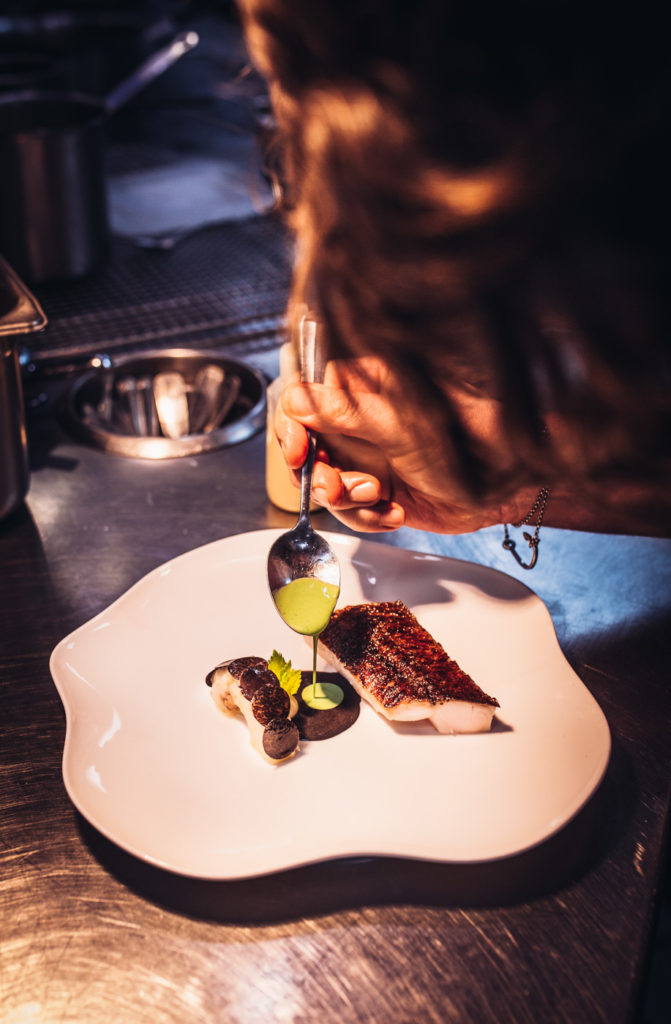
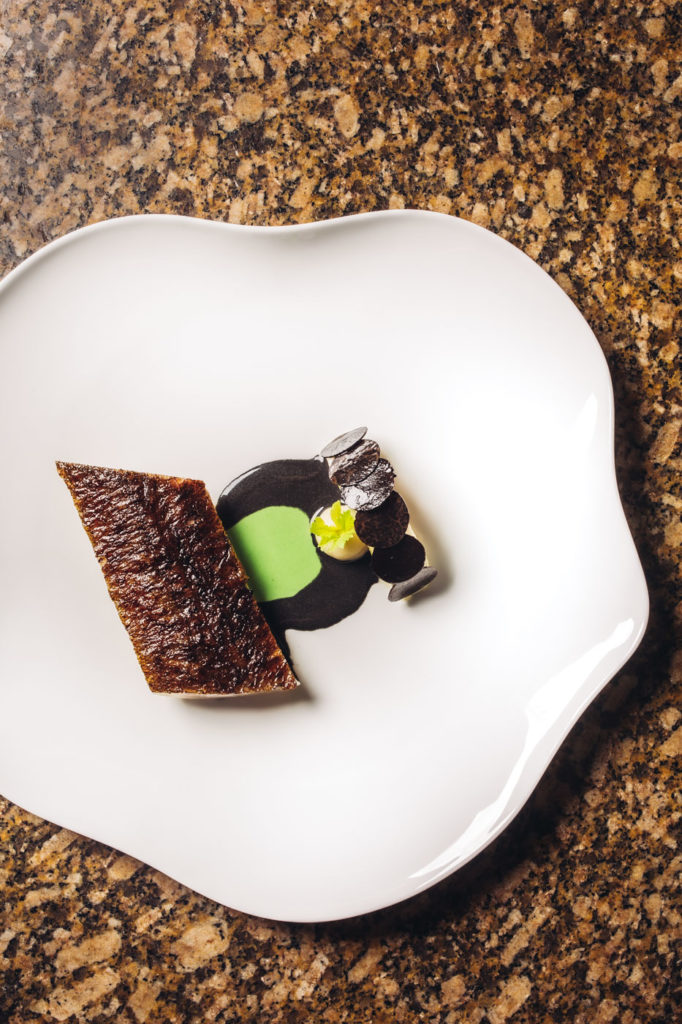
“Salmon, sea bass, yellowtail, all of these fish—they did not evolve to eat grains or a diet that is largely comprised of land-based proteins,” Cimarusti says. “If fish don’t eat their normal forage prey like bait fish and krill and crustaceans and echinoderms, they’re not going to taste anywhere near their wild counterparts.”
There are also environmental issues created by aquatic farms, which produce about half the seafood on the market.
“You have mass concentrations of fish in what are relatively small confined areas that have massive impact on the environment around them,” he says. “Many of the fish are raised in places where they don’t naturally occur and then interbreed with their wild counterparts and weaken those wild fish.”
Plus, putting all this farmed fish in a confined space results in a large amount of waste that overwhelms the surrounding waters. “It creates dead zones,” Cimarusti says. “It’s about the entire ecosystem, algae, everything from the very smallest animals all the way up the food chain.”
But maybe the most compelling reason to support wild fisheries is something Cimarusti first heard sustainable-seafood expert Barton Seaver express. “When you go to a coastal community, to a fishing community, you look out at the sea and you look out at all the boats,” Cimarusti says. “That only offers you part of the picture. What you need to do is turn around and look inland and look at the schools and the churches and the homes, because that’s where all those people who make their living in the sea go through their daily lives.”
It’s a crucial point. When it comes to seafood, the issue of extinction isn’t just about what’s in the water. It’s also about a way of life for those who live above ground. When you buy local seafood, you support communities and keep them vital.
While the world’s seafood supply is being threatened in manifold ways, the resilience of fish is something Cimarusti cites as a point of hopefulness.
“This past year, the wild salmon harvest in California was the best I can remember in twenty-some years of cooking in California,” he says. “We had wild salmon available pretty much from June until September, which is remarkable.”
Habitat restoration, quotas and other regulations no doubt played a part in this. Mother Nature also helped.
“Three or four years ago we probably had a wet winter, which means the spawning grounds were open and accessible to returning salmon,” Cimarusti says. “It’s important to point out that there are always bright spots in all of this.”






Our comments section is for members only.
Join today to gain exclusive access.